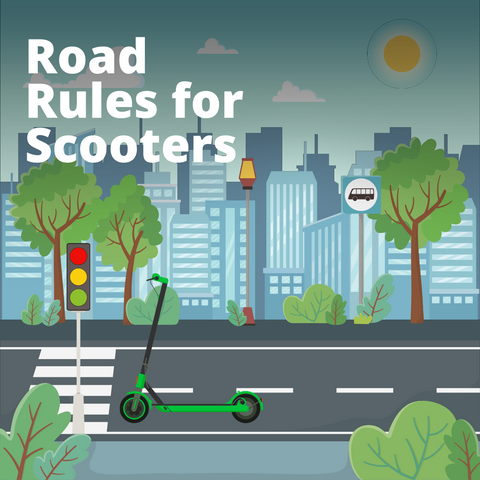The rules for riding scooters on the road
Have you noticed how many electric scooters (e-scooters) and e-bikes have popped up recently? These high-tech devices, which use small electric motors to fly around town, make getting around easy. Now, as you look into buying one for yourself, you might wonder exactly where you can use them and whether electric scooters are allowed on bike trails. Let’s find out.
Understanding E-scooters
Recently, e-scooters have become a regular sight on city streets. They usually come with fewer than four wheels and no seat, requiring you to stand on a platform. To manoeuvre them, you adjust your body weight from one side to another. Their streamlined appearance is due to electric motors that operate silently, ensuring environmentally friendly transport that is worth considering as an alternative to traditional vehicles.

The Legal Landscape State by State
The legal definition and regulations on e-scooters vary widely from one state to another, creating a confusing labyrinth about whether electric scooters are allowed on bike trails. Every state has unique statutes and definitions outlining how e-scooters are used on public roads and sidewalks.
California
In California, e-scooters are regarded as vehicles that fall under the motorised transportation category according to state law. This means that the riders of such scooters must observe laws and regulations governing vehicle registration, licensing, and operation. The government has set up some rules and regulations to manage traffic flow on public roads.
New York
In contrast, New York City, where most people live, classifies e-scooters as non-motor vehicles, much like bicycles or old-fashioned kick-scooters.
Consequently, there are less strict rules regarding powered vehicles, so you can quickly choose a way to move around easily.
Regulatory Variation Across the Nation
Apart from California and New York, the regulations affecting e-scooters are unique across the country as each state has its specific way of dealing with these devices. Some states may use the same classification for e-scooters, just like California, as motor vehicles, so they are highly restricted. On the contrary, other states may take after New York, where non-motor vehicles have more liberty.
It would be different for you as an e-scooter rider if you were in a state where it is considered a vehicle. As such, you will face stricter rules and regulations like registration or adherence to traffic laws if electric scooters are termed engines. However, there needs to be more control in those regions where electronic scooters are classified as non-powered vehicles.
Are electric scooters allowed on bike trails?
For individuals considering using e-scooters as a mode of transportation, one of the most pressing questions revolves around where they can ride. This concern is essential because local traffic adherence ensures safety and compliance with the law. However, the answer to this question is standard; it depends on the specific regulations enforced in each state.
In certain states, such as Delaware and Pennsylvania, e-scooters face stringent restrictions that prohibit their usage on roads in the first place. Consequently, bike lanes within these states are also deemed “No-GO” to e-scooter riders. This regulatory approach is cautious about integrating e-scooters into existing transportation infrastructure. This also emphasises the need for alternative routes or modes of transport for the locals.
Navigating the Nuances
The laws may seem confusing, but they elaborate well on what electric streets and motorbike paths are accessible to electric scooters. For example, Michigan restricts e-scooters to not exceeding 25 miles per hour. But Oklahoma generously allows up to 35 miles per hour. Conclusion
Frequent appearances of electric scooters require riders to stay alert about: “Are electric scooters allowed on bike trails?” This awareness ensures your safety and compliance with the law. Whether cruising through town streets or suburbs, understanding the policies of the street is fundamental to an easy and exciting journey.


